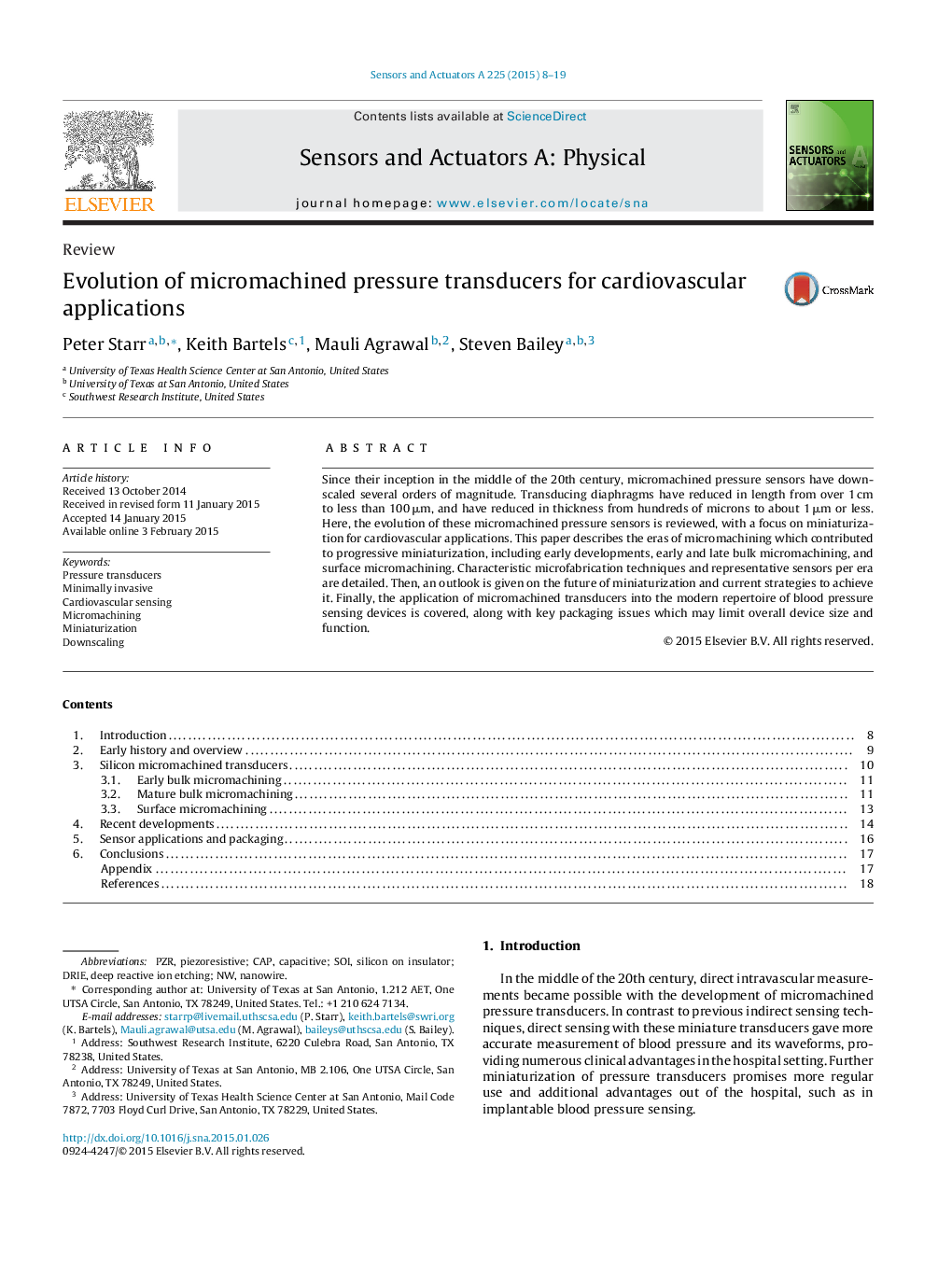| Article ID | Journal | Published Year | Pages | File Type |
|---|---|---|---|---|
| 7135962 | Sensors and Actuators A: Physical | 2015 | 12 Pages |
Abstract
Since their inception in the middle of the 20th century, micromachined pressure sensors have downscaled several orders of magnitude. Transducing diaphragms have reduced in length from over 1 cm to less than 100 μm, and have reduced in thickness from hundreds of microns to about 1 μm or less. Here, the evolution of these micromachined pressure sensors is reviewed, with a focus on miniaturization for cardiovascular applications. This paper describes the eras of micromachining which contributed to progressive miniaturization, including early developments, early and late bulk micromachining, and surface micromachining. Characteristic microfabrication techniques and representative sensors per era are detailed. Then, an outlook is given on the future of miniaturization and current strategies to achieve it. Finally, the application of micromachined transducers into the modern repertoire of blood pressure sensing devices is covered, along with key packaging issues which may limit overall device size and function.
Keywords
Related Topics
Physical Sciences and Engineering
Chemistry
Electrochemistry
Authors
Peter Starr, Keith Bartels, Mauli Agrawal, Steven Bailey,
